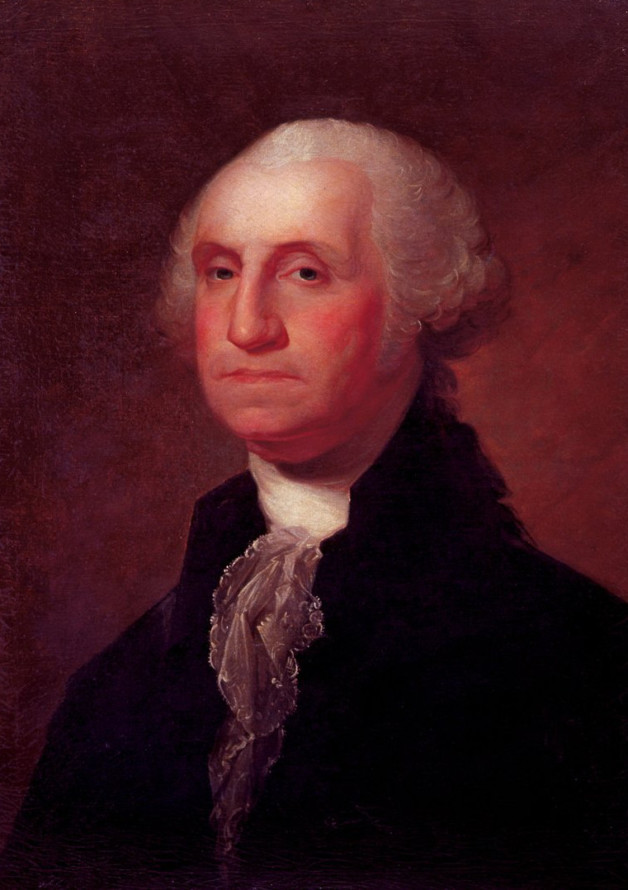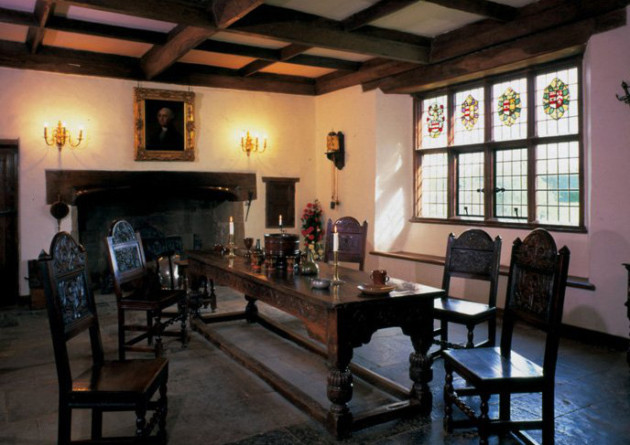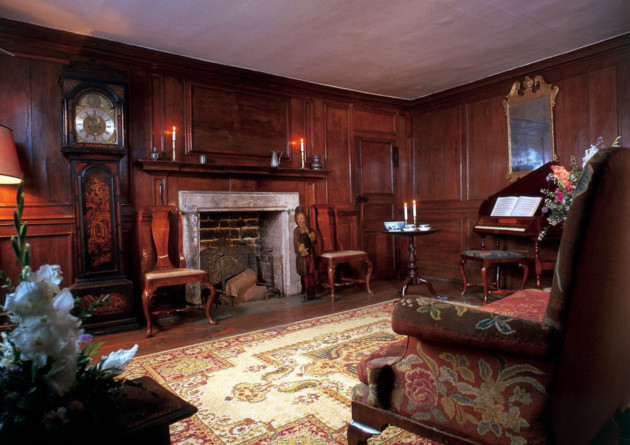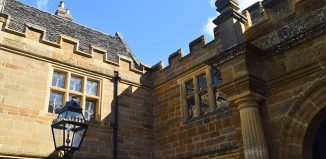Sulgrave Manor: Ancestral home of First US President George Washington

In a quiet corner of rural Northamptonshire, on the edge of an idyllic hamlet made up of golden stone cottages surrounded verdant pastures and arable land, sits a comfortable looking manor house. Neither grandiose nor unkempt, this modest dwelling houses a portrait in an upper room. It is of a mother. She looks stern and forbidding.
It may be creative licence on the part of the artist, but she doesn’t look the sort of woman to be messed with, especially if you’re a young boy. For this woman is Mary Ball, an unfamiliar name perhaps but once married, she became the mother of George Washington, the first president of the United States of America.
George may have been the first head of state and a Founding Father of a new country, but he was not the first Washington to acquire land, property, high office or wealth through trade; indeed his forbears had proved such acquisitions to be an art form that the family succeeded at. It was his fifth great grandfather, Lawrence Washington, who managed to attach himself to a noble family and, within the space of a few years, rose from being a servant to a rich and prosperous wool merchant and a part of the landed gentry. Born into Tudor England, when families with political punch and connections bore great significance, Lawrence originated from the small village of Warton in the northwest of England. Working for William Parr, a titled baron and the brother of Queen Katherine Parr (Henry VIII’s last wife), Lawrence visited Northamptonshire on estate business where he married a rich widow, Elizabeth Gough. In doing so, Lawrence took over the property and prosperous woolstapling business of Elizabeth’s former husband and became Mayor of Northampton in 1532.

George Washington, First US President
Lawrence bought the freehold of land in the village of Sulgrave and there, in 1539, he built his manor house. Eager to demonstrate his burgeoning wealth, his house provides a personal statement of rank and nobility. Sulgrave Manor, though relatively modest in size, is one of the largest houses in the village; it has brick chimneys – à la mode at the time it was built – and above the south-facing entrance porch sits numerous symbols of prosperity. A triangular symbol representing sheep and wool (from which Lawrence made his wealth) are mingled with the family coat of arms, indicating his nobility, together with the Queen’s (Elizabeth I) coat of arms. “Not everyone could display such a regal symbol, indeed permission had to be granted,” explains Cymon Snow, General Manager of Sulgrave Manor today, “and a couple of theories abound, most notably that the then Princess may have stayed at Sulgrave. Rumour suggests that she was helped to escape having been imprisoned at nearby Woodstock Palace in 1554 (destroyed later during the English Civil War) and was hidden in an attic space at Sulgrave Manor”.
Indeed it is the Washington’s staunch support for the royalists that ultimately led to their undoing in England. Sulgrave Manor remained in the Washington family for three generations. But, as royalists with notable connections, they found themselves supporting the wrong side during the English Civil War and Lawrence’s great grandson, the Reverend Lawrence Washington, born at Sulgrave Manor in 1602, became destitute with no prospects for either himself or his young family. Sulgrave Manor was sold to an uncle by marriage and John Washington, eldest son of the Reverend Lawrence, became a merchant seaman and set sail for America to trade with the Virginian colony.
Explains Cymon, “With the chain of events that took place, it could be argued that the United States of America was born right here at Sulgrave Manor. If it wasn’t for Reverend Lawrence Washington being a royalist, John Washington would not have gone to Virginia and the founding of a new country by John’s grandson, George Washington, might have a different history.

The Great Hall, where Lawrence Washington greeted guests. Photo copyright: Sulgrave Manor
It’s a truly remarkable story too that George Washington’s ancestral home is open to all in the 21st century. Within 160 years of Sulgrave Manor’s creation, the house left the Washington family altogether. For over two centuries it remained occupied by other families but fell into disrepair at the beginning of the 20th century. In 1914, the Manor came onto the market once more. At that time both Britain and America had set up a Peace Centenary Committee, looking for some way in which to commemorate the centenary of the Treaty of Ghent, a peace treaty signed by both countries.
As George Washington’s ancestral home, Sulgrave Manor was deemed a particularly suitable venue to create a lasting symbol of shared peace. Money was raised by public subscription on both sides of the Atlantic Ocean to purchase the Manor and ever since, the house has stood to symbolise peace between the two countries and to further friendship and education. Hence, one hundred years since its purchase and two hundred years since the Treaty of Ghent, Sulgrave Manor continues to be owned by the people and held in trust for the people.
A part of the beauty of Sulgrave Manor is that, but for the restoration required in 1914, it has been largely untouched since its creation by Lawrence Washington in 1539. The house is a little smaller than the original building, as, for reasons unknown, a part of the house was pulled down during the 18th century. Internally 800 years of Washington family history is presented.
The Great Hall, a marvellous showpiece of prosperity, is laid out as Lawrence Washington would have welcomed guests, displaying his status at the head of the board table. To the side of the fireplace is Lawrence’s salt and spice cupboard, an instant demonstration to his arriving guests of his wealth, in affording such expensive and exotic goods. Befitting of the Great Hall, two portraits of George Washington hang on the walls. One is a copy of a Wilson Peale portrait, with George Washington dressed as a Redcoat. Explains Cymon Snow, “Visitors sometimes forget that, coming from a royalist family (his mother also came from British stock and had family living in England), George was a British soldier before becoming Commander in Chief of the Continental Army during the American Revolution”. On another wall hangs an original Gilbert Stewart portrait of George. Simon continues, “Visitors are familiar with this portrait. It is used on the American dollar bill. The mystery though is that Stewart only every painted the left profile of George Washington, yet on the dollar bill, he is right profile. One wonders if there was a printing mistake.”

The Oak Parlour has 18th-century decor. Photo: Sulgrave Manor
Adjacent is the Oak Parlour, a room decorated from the 18th century, long after the Washingtons had left Sulgrave Manor but from the time when George Washington was alive. The room includes a third portrait of George Washington from the Scottish artist, Archibald Robertson, and represents a different period in the life of the first president to those hanging in the Great Hall. As a continuing symbol of peace, the room also includes a collection of silverware that once graced the Officer’s Mess of nearby USAF Upper Heyford. When the airbase closed in 1994, the collection was given to Sulgrave Manor.
A continuing friendship is also demonstrated in the Great Chamber on the upper floor, with a large-scale project that involved 700 volunteer craftspeople on both sides of the Atlantic. Hanging round and draped on the 16th-century four-poster bed are exquisite embroideries, using techniques from the Tudor period. Completed in 2007, the panels are made up with hundreds of different designs, inspired by motifs and symbols from elsewhere in the house.
Sulgrave Manor owns the largest collection of George Washington memorabilia in the UK, but much of it has not been seen for a hundred years. Says Cymon, “Our archivist has found handwritten letters by George, but we need to get them on show. We have a major strategy plan being put into place at the present time, and a part of that is to create an archive room and George Washington museum here.”
The plans extend to the 43-acre estate owned by Sulgrave Manor. These include three acres of very picturesque gardens that surround the house, including an ancient apple orchard, a traditional herb garden and an American Garden, growing the types of produce that would have been planted by early settlers in Colonial Virginia.
But pride of place, in a circular courtyard in front of the house, is a bronze bust of George Washington. Unlike the portrait of his mother, he looks serene, content, and at peace with his surroundings.




